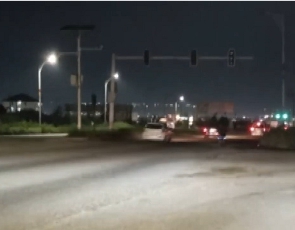Diasporia News of Friday, 9 March 2012
Source: --
Daylight Saving Time Starts March 11
It's nearly time to 'Spring Forward.'
Don't forget to change your clocks before you go to bed Saturday—set them one hour ahead. The bad news: you lose an hour of sleep. The good news? The sun sets an hour later, at 7 p.m.
It's been five years since Congress authorized a change in the annual tradition of Daylight Saving Time, changing the months in which we change the clocks from April and October to March and November.
This year, Daylight Savings runs from March 11 until Nov. 4.(Unless you're in Arizona, Hawaii, Puerto Rico or the U.S. Virgin Islands—they don't do Daylight Saving Time.)
Around the world, about 75 countries and territories have at least one location that observes Daylight Saving Time, according to TimeandDate.com. On the other hand, 164 don't observe the time change at all.
Brief History:
According to the Huffington Post:
Benjamin Franklin has been credited with the idea of Daylight Saving Time, but Britain and Germany began using the concept in World War I to conserve energy, the Washington Post observes. The U.S. used Daylight Saving Time for a brief time during the war, but it didn't become widely accepted in the States until after the second World War.
In 1966, the Uniform Time Act outlined that clocks should be set forward on the last Sunday in April and set back the last Sunday in October.
That law was amended in 1986 to start daylight saving time on the first Sunday in April, though the new system wasn't implemented until 1987. The end date was not changed, however, and remained the last Sunday in October until 2006.
The time change will precede the first day of spring and the vernal equinox, which is set to take place at 1:14 a.m. EDT on Tuesday, March 20.
While changing the time on your clocks, why not check batteries in smoke alarms and carbon monoxide detectors? The Firemen’s Association of the State of New York (FASNY) reminds residents to use Daylight Saving Time to change the batteries in their smoke alarms and carbon monoxide (CO) detectors, and test the detectors to determine if it is time to replace them outright.
Opinions









